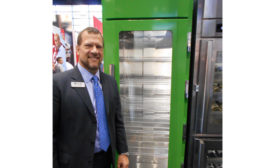Refrigeration
Heat Transfer Products Group Inc.’s air-cooled condenser takes the top prize
Read More
Defining, Understanding, and Applying Proper Subcooling
Beginning technicians often have difficulty understanding and calculating subcooling
Read More
Emerging From the Regulatory Tunnel
Freezer and cooler manufacturers are primed to get back to customer-centric innovation
Read More
Working Safely with HC Refrigerants
Technicians will soon be encountering R-290 and R-600a in commercial kitchens
Read More
AHRTI Issues First Low-GWP Alternative Refrigerants Report
Residential and commercial ‘worst-case scenarios’ included in A2L research
July 5, 2017
The Refrigeration School Creates Training Course for Valley Metro Rail
First-ever specialized course is for light rail system that operates in 100-degree heat
July 5, 2017
Global Refrigerants Market Projected to Grow at 4.5 Percent Through 2021
Asia-Pacific region will continue to be largest market; HCs projected grow the fastest
July 5, 2017
Visit to Museum Provides Perspective in Uncertain Times
New innovations will continue to spring from our industry’s brilliant minds
Read More
Brace for High Refrigerant Prices this Summer
Supply struggles in China, anti-dumping duties in US are contributing factors
Read More
Copyright ©2024. All Rights Reserved BNP Media.
Design, CMS, Hosting & Web Development :: ePublishing











